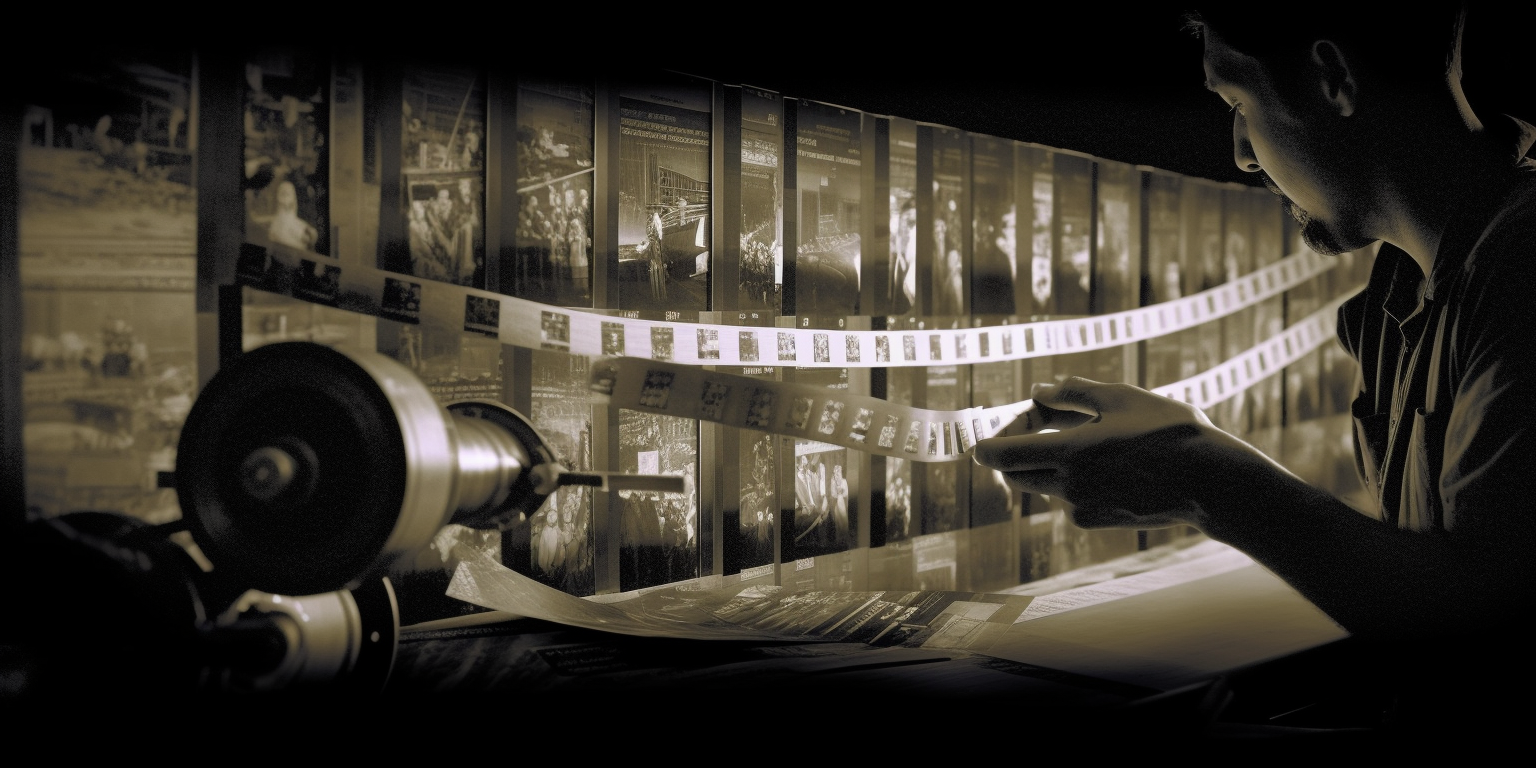frame-interpolation
Maintainer: google-research

259

| Property | Value |
|---|---|
| Run this model | Run on Replicate |
| API spec | View on Replicate |
| Github link | View on Github |
| Paper link | View on Arxiv |
Create account to get full access
Model overview
The frame-interpolation model, developed by the Google Research team, is a high-quality frame interpolation neural network that can transform near-duplicate photos into slow-motion footage. It uses a unified single-network approach without relying on additional pre-trained networks like optical flow or depth estimation, yet achieves state-of-the-art results. The model is trainable from frame triplets alone and uses a multi-scale feature extractor with shared convolution weights across scales.
The frame-interpolation model is similar to the FILM: Frame Interpolation for Large Motion model, which also focuses on frame interpolation for large scene motion. Other related models include stable-diffusion, a latent text-to-image diffusion model, video-to-frames and frames-to-video, which split a video into frames and convert frames to a video, respectively, and lcm-animation, a fast animation model using a latent consistency model.
Model inputs and outputs
The frame-interpolation model takes two input frames and the number of times to interpolate between them. The output is a URI pointing to the interpolated frames, including the input frames, with the number of output frames determined by the "Times To Interpolate" parameter.
Inputs
- Frame1: The first input frame
- Frame2: The second input frame
- Times To Interpolate: Controls the number of times the frame interpolator is invoked. When set to 1, the output will be the sub-frame at t=0.5; when set to > 1, the output will be an interpolation video with (2^times_to_interpolate + 1) frames, at 30 fps.
Outputs
- Output: A URI pointing to the interpolated frames, including the input frames.
Capabilities
The frame-interpolation model can transform near-duplicate photos into slow-motion footage that looks as if it was shot with a video camera. It is capable of handling large scene motion and achieving state-of-the-art results without relying on additional pre-trained networks.
What can I use it for?
The frame-interpolation model can be used to create high-quality slow-motion videos from a set of near-duplicate photos. This can be particularly useful for capturing dynamic scenes or events where a video camera was not available. The model's ability to handle large scene motion makes it well-suited for a variety of applications, such as creating cinematic-quality videos, enhancing surveillance footage, or generating visual effects for film and video production.
Things to try
With the frame-interpolation model, you can experiment with different levels of interpolation by adjusting the "Times To Interpolate" parameter. This allows you to control the number of in-between frames generated, enabling you to create slow-motion footage with varying degrees of smoothness and detail. Additionally, you can try the model on a variety of input image pairs to see how it handles different types of motion and scene complexity.
This summary was produced with help from an AI and may contain inaccuracies - check out the links to read the original source documents!
Related Models

film-frame-interpolation-for-large-motion

43
film-frame-interpolation-for-large-motion is a state-of-the-art AI model for high-quality frame interpolation, particularly for videos with large motion. It was developed by researchers at Google and presented at the European Conference on Computer Vision (ECCV) in 2022. Unlike other approaches, this model does not rely on additional pre-trained networks like optical flow or depth estimation, yet it achieves superior results. The model uses a multi-scale feature extractor with shared convolution weights to effectively handle large motions. The film-frame-interpolation-for-large-motion model is similar to other frame interpolation models like st-mfnet, which also aims to increase video framerates, and lcm-video2video, which performs fast video-to-video translation. However, this model specifically focuses on handling large motions, making it well-suited for applications like slow-motion video creation. Model inputs and outputs The film-frame-interpolation-for-large-motion model takes in a pair of images (or frames from a video) and generates intermediate frames between them. This allows transforming near-duplicate photos into slow-motion footage that looks like it was captured with a video camera. Inputs mp4**: An MP4 video file for frame interpolation num_interpolation_steps**: The number of steps to interpolate between animation frames (default is 3, max is 50) playback_frames_per_second**: The desired playback speed in frames per second (default is 24, max is 60) Outputs Output**: A URI pointing to the generated slow-motion video Capabilities The film-frame-interpolation-for-large-motion model is capable of generating high-quality intermediate frames, even for videos with large motions. This allows smoothing out jerky or low-framerate footage and creating slow-motion effects. The model's single-network approach, without relying on additional pre-trained networks, makes it efficient and easy to use. What can I use it for? The film-frame-interpolation-for-large-motion model can be particularly useful for creating slow-motion videos from near-duplicate photos or low-framerate footage. This could be helpful for various applications, such as: Enhancing video captured on smartphones or action cameras Creating cinematic slow-motion effects for short films or commercials Smoothing out animation sequences with large movements Things to try One interesting aspect of the film-frame-interpolation-for-large-motion model is its ability to handle large motions in videos. Try experimenting with high-speed footage, such as sports or action scenes, and see how the model can transform the footage into smooth, slow-motion sequences. Additionally, you can try adjusting the number of interpolation steps and the desired playback frames per second to find the optimal settings for your use case.
Updated Invalid Date

video-to-frames

11
The video-to-frames model is a small CPU-based model created by fofr that allows you to split a video into individual frames. This model can be useful for a variety of video processing tasks, such as creating GIFs, extracting audio, and more. Similar models created by fofr include toolkit, lcm-video2video, lcm-animation, audio-to-waveform, and face-to-many. Model inputs and outputs The video-to-frames model takes a video file as input and allows you to specify the frames per second (FPS) to extract from the video. Alternatively, you can choose to extract all frames from the video, which can be slow for longer videos. Inputs Video**: The video file to split into frames Fps**: The number of frames per second to extract (default is 1) Extract All Frames**: A boolean option to extract every frame of the video, ignoring the FPS setting Outputs An array of image URLs representing the extracted frames from the video Capabilities The video-to-frames model is a simple yet powerful tool for video processing. It can be used to create frame-by-frame animations, extract individual frames for analysis or editing, or even generate waveform videos from audio. What can I use it for? The video-to-frames model can be used in a variety of video-related projects. For example, you could use it to create GIFs from videos, extract specific frames for analysis, or even generate frame-by-frame animations. The model's ability to handle both frame extraction and full-frame export makes it a versatile tool for video processing tasks. Things to try One interesting thing to try with the video-to-frames model is to experiment with different FPS settings. By adjusting the FPS, you can control the level of detail and smoothness in your extracted frames, allowing you to find the right balance for your specific use case. Additionally, you could try extracting all frames from a video and then using them to create a slow-motion effect or other creative video effects.
Updated Invalid Date

lcm-animation

24
The lcm-animation model is a fast animation tool that uses a latent consistency model (LCM) to create smooth, high-quality animations from input images or prompts. This model is similar to the latent-consistency-model by the same creator, which also uses LCM with img2img, large batching, and Canny control net for super-fast animation generation. Other related models include MagicAnimate, which focuses on temporally consistent human image animation using a diffusion model, and AnimateLCM, a cartoon 3D model for animation. Model inputs and outputs The lcm-animation model takes a variety of inputs, including a starting image or prompt, seed, width, height, end prompt, number of iterations, start prompt, and various control parameters for the Canny edge detection and guidance. The model outputs a series of images that can be combined into an animation. Inputs Seed**: Random seed to use for the animation. Leave blank to randomize. Image**: Starting image to use as the basis for the animation. Width**: Width of the output images. Height**: Height of the output images. End Prompt**: The prompt to animate towards. Iterations**: Number of times to repeat the img2img pipeline. Start Prompt**: The prompt to start with, if not using an image. Return Frames**: Whether to return a tar file with all the frames alongside the video. Guidance Scale**: Scale for classifier-free guidance. Zoom Increment**: Zoom increment percentage for each frame. Prompt Strength**: Prompt strength when using img2img. Canny Low Threshold**: Canny low threshold. Num Inference Steps**: Number of denoising steps. Canny High Threshold**: Canny high threshold. Control Guidance End**: Controlnet end. Use Canny Control Net**: Whether to use Canny edge detection to guide the animation. Control Guidance Start**: Controlnet start. Controlnet Conditioning Scale**: Controlnet conditioning scale. Outputs A series of image files that can be combined into an animation. Capabilities The lcm-animation model can create high-quality, smooth animations from input images or prompts. It uses a latent consistency model and control net techniques to generate animations that maintain temporal consistency and coherence, resulting in realistic and visually appealing animations. The model is also capable of generating animations with a wide range of artistic styles, from realism to abstraction, depending on the input prompts and parameters. What can I use it for? The lcm-animation model can be used for a variety of creative and commercial applications, such as generating animated content for videos, social media, or advertising. It could also be used for educational or scientific visualizations, or as a creative tool for artists and animators. Like the face-to-many model by the same creator, the lcm-animation model could be used to create unique and stylized animations from input images or prompts. Things to try With the lcm-animation model, you could experiment with different input prompts and parameters to see how they affect the style and quality of the generated animations. For example, you could try using a more abstract or surreal prompt and see how the model interprets and animates it. You could also experiment with the Canny edge detection and guidance parameters to see how they influence the overall look and feel of the animation. Additionally, you could try using different starting images and see how the model transforms them into animated sequences.
Updated Invalid Date

frames-to-video

1
The frames-to-video model is a tool developed by fofr that allows you to convert a set of frames into a video. This model is part of a larger toolkit created by fofr that includes other video-related models such as video-to-frames, toolkit, lcm-video2video, audio-to-waveform, and lcm-animation. Model inputs and outputs The frames-to-video model takes in a set of frames, either as a ZIP file or as a list of URLs, and combines them into a video. The user can also specify the frames per second (FPS) of the output video. Inputs Frames Zip**: A ZIP file containing the frames to be combined into a video Frames Urls**: A list of URLs, one per line, pointing to the frames to be combined into a video Fps**: The number of frames per second for the output video (default is 24) Outputs Output**: A URI pointing to the generated video Capabilities The frames-to-video model is a versatile tool that can be used to create videos from a set of individual frames. This can be useful for tasks such as creating animated GIFs, generating time-lapse videos, or processing video data in a more modular way. What can I use it for? The frames-to-video model can be used in a variety of applications, such as: Creating animated GIFs or short videos from a series of images Generating time-lapse videos from a sequence of photos Processing video data in a more flexible and modular way, by first breaking it down into individual frames Companies could potentially monetize this model by offering video creation and processing services to their customers, or by integrating it into their own video-based products and services. Things to try One interesting thing to try with the frames-to-video model is to experiment with different frame rates. By adjusting the FPS parameter, you can create videos with different pacing and visual effects, from slow-motion to high-speed. You could also try combining the frames-to-video model with other video-related models in the toolkit, such as video-to-frames or toolkit, to create more complex video processing pipelines.
Updated Invalid Date